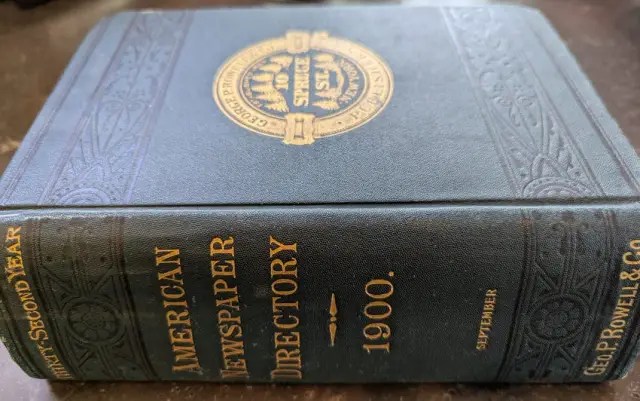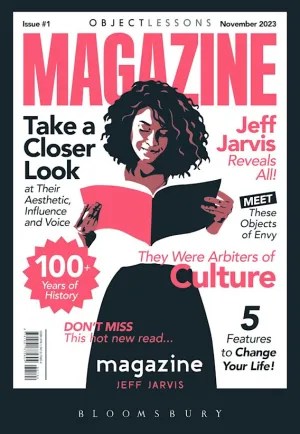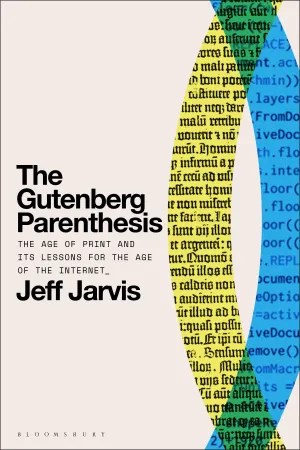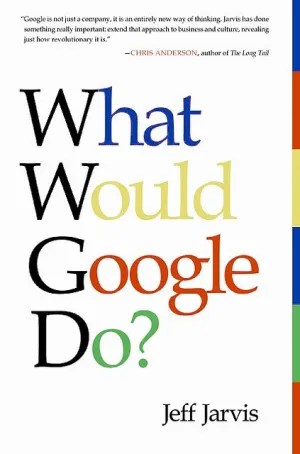As often as I am disappointed in and critical of them lately, I will not cancel my subscriptions to The New York Times or The Washington Post. They should be so lucky, for I will stay on their cases. I also wish to support the good reporting that still comes from them.
I’ve been thinking of calling together some of the papers’ ever-growing cadre of critics for an intervention of sorts, to examine the increasingly troubling performances, ask why we think this has been happening, and suggest what might be done. I want to be hopeful for these critical journalistic institutions. A few weeks ago, I was. Then came disappointment. After the presidential debate, I praised The Times’ coverage and play. Then came disappointment again.
I am one among many citizens and journalists critical of The Times et al. When, in a rare moment of disagreement with Margaret Sullivan, I argued Kamala Harris should not submit to an interview with incumbent national political media, I thought I’d get holy journalistic hell. I didn’t. Only six defensive journalists (I counted) complained; countless more agreed. I’ve suggested to fellow media critics that they are missing the story of their careers: a crush of complaint about these once-venerable institutions, not from the right (which wants to destroy them) but from the left (we only want them to be better).
To be clear, there are many theories about these news organizations I do not subscribe to:
I do not believe that The Times or The Post want Donald Trump elected. Neither do I think they necessarily want Kamala Harris defeated.
Nor do I do believe, as I hear said on the socials, that anyone in these newsrooms is in the pay of Russians, Republicans, or other nefarious forces. Neither do I think that the owners of these publications — even the malign Rupert Murdoch — are daily dictating assignments or headlines, though at a higher level they do bear responsibility for their direction.
Finally, though it’s true that the attention economy — born in mass media and imported online — values attention, thus conflict, I don’t think believe the quality of political coverage is purely the product of clickbait and greed: nothing so obvious.
These are the speculations so often expressed in frustration and anger on social media in response to the latest missteps by these once-august publications. I understand that.
But it would be a mistake to fall into such pat conspiracy-theorizing, for that misses the deeper questions about the subtle and insidious effects infecting the culture of these large, national newsrooms — while giving the defensive denizens of those institutions an easy excuse to dismiss legitimate criticism of their work, for example:
I do wonder what the hell is happening at these newspapers, for it has been — to use Silver’s word — disturbing. I won’t try to catalog all their lapses, sins, and offenses here, for I do that every day now, lately using the hashtags #BrokenTimes, #BrokenPost, and #MurdochJournal to aid in gathering them. The symptoms are self-evident: bothsidesing asymmetry into false balance, normalizing extremism, sane-washing — or worse, ignoring — Trump’s obvious debilitation, downplaying the imminent peril of fascism, putting themselves at the center of this story over the people most at risk, and most recently completely missing what I think could be the biggest political story in a century: the rise of a grand coalition to save democracy. I could go on. I do go on, day after day, so much that I dread opening the pages of these publications most mornings.
Are there exceptions? Absolutely, there are. There is still excellent journalism coming out of these newsrooms (and I will try to label examples of that with the hashtags #GoodTimes and #GoodPost). That there are many experienced and caring reporters in these places is what makes this discussion worth having.
I even see some caring journalists share public criticism of the state of news in subtle subtweets or what can appear to be hostage videos, given that they are muzzled by newsroom rules against self-criticism of their companies. Since the ombudsman has been made extinct in those newsrooms, I very much value these perspectives.
What I do not know is why all this has been happening. I have no inside knowledge. Even so, we need to discuss possible causes to have any sense of how we got here and what — if anything — might be done about it. Either that or we decide that it is too late, that we must abandon these incumbent institutions and move to replace them.
Theory: Independence
One theory I keep coming back to is one that Jay Rosen first posited in 2018, examining the impact of an important shift in the economics of The Times from majority support by advertising to majority support from subscribers. “The readers of the New York Times have more power now,” he observed.
One might think that should mean The Times would not want to peeve its readers — though it incessantly does. As Jay also noted, “One of the joys of having a subscription to the Times is threatening to cancel it.” Wouldn’t management do everything to avert cancelation? Yet the opposite is occuring: The Times practically dares its readers to leave. Why?
An old journalism trope has it that if you anger both sides of a story, you must be doing something right. (Nevermind that you might also have so screwed up the story that everyone can see it.) But that’s not what’s happening here. That, too, is too simple a thesis.
I have another interpretation: The sixth-generation Times publisher, A.G. Sulzberger, has lately replaced the often-claimed standard of journalistic “objectivity” with his call for “independence.” But independent of whom? Not advertisers anymore; neither political parties nor governments. I theorize he is trying to prove his paper’s independence from its own readers and liberals — who, as I’ve said, happen to be the same people. Pissing them off might be The Times’ way of saying: You don’t own us.
If The Times can argue that it is not a liberal newspaper and can present voluminous bona fides (see the evidence at #BrokenTimes), then its publisher and editors think they are immunized from criticism, whether from journalism professors or MAGA politicians.
Theory: One size fits all
Another theory holds that to be a liberal newspaper is bad for business, driving away half the market. That argument might have been valid in the day of monopoly metro newspapers, but for these national publications, it’s sophistry. We know full well that Murdoch acolytes watching Fox News are not and never will become Times readers. In this post, I quote Marty Baron’s memoirs, in which he reported that “by the fall of 2018, the percentage of our digital subscribers who considered themselves somewhat or very conservative was in the single digits, with slightly more than 80 percent ‘very’ or ‘somewhat’ liberal.” He seemed to lament that he couldn’t win over conservative readers. I suggested he should have seen this data as a gift: By knowing the community one is serving, one knows how to better serve them. That does not mean pandering to their beliefs. It just means the newsroom — and especially the editorial page and its columnists — can stop trying to suck up to right-wing extremists.
Theory: Death to the mass
I have another theory altogether, one that has been animating my work in the last decade. It’s about the death of the mass media business model, with it mass media, and with it the idea of the mass. That was the book I set out to write that became The Gutenberg Parenthesis. I had begun to write about sociological theories of the mass but decided I wasn’t ready (it became the kernel of a chapter in Gutenberg entitled “Death to the Mass”). I realized I needed to examine the origins of the mass, which meant studying the birth of print. Hello, Gutenberg.
I next wrote Magazine a small (and fun) book about the long century of the magazine as a way to explore the arc of the long century of mass media. I’m now writing a book called Hot Type about the Linotype and the mechanization and industrialization of print it heralded — and thus the dawn of mass media.
Today we come to the dusk of mass media (that’s the next book I want to work on). Its assassin is the internet, which enables any and all to publish to the world, obliterating mass media’s control over the scarcities of voice in the culture, and robbing publishers — in their perspective — of the pricing power they held over those who wanted to reach the mass, whom publishers and broadcasters thought they could own.
That, I think, could be one cause of what we are seeing happen in The Times, The Post, The Journal, network news, and other national news media. They cannot stop believing it is their mission, even their birthright, to serve and sell to everyone — the mass — when everyone now has more choices to go to. They hate that they no longer control access to audience, attention, authority — and advertising — and resent their replacement by digital startups, bloggers, social media, so-called influencers, the technology companies that enable them, and the masses themselves.
Ironically, I believe that the overarching story mass media are failing to cover at all adequately — the rise of American fascism in the body of white, christian nationalism — is fueled by the Trumpists’ explicit fear of “replacement.” Trump’s insurrectionists would sooner burn the fields than share the nation’s bounty with those who have built it.
The reaction inside journalism is not insurrection. It is the opposite: defensiveness, circled wagons, retrenchment, refusing to hear or dismissing criticism and denigrating critics, and finding others to blame for their problems — often, the internet.
I address that in my new book out next month, The Web We Weave. I began the book intending to write a defense of internet freedoms, but it became a critique of media’s moral panic over the internet and the impact that is having on those freedoms. News institutions as companies never acknowledge their own conflict of interest in covering what they see as a new competitors on the net.
I see a much larger problem at work: Journalists and news executives — and I include myself in this critique — were never equipped with the tools of theory and history to inform self-reflection on our field and to imagine alternative means and models of serving our publics.
This is why I hold that simply teaching the craft and skills of journalism in journalism schools is wholly inadequate to the profound challenges in our field. Journalists see themselves as producers of the commodity they call content and they define their value according to their roles in that process of manufacture. They would be better served to also learn from the disciplines of media studies, communication, history, sociology, ethics, and others — empowering them to reimagine and reform our field.
When I started teaching journalism myself as a mere practitioner in 2006, I tried to learn from the example of my actual academic friend and mentor, Dr. Rosen, whom I often witnessed standing back from any phenomenon in our discipline to abstract: to ask what is really happening here, and then to examine the implications of the possible answers. I wanted my students to be able to do that as they embarked on careers in a field undergoing profound change, and so I wanted to teach them the theory, history, and economics of journalism (and was given an ever-shrinking timeslot to do so). Of course, that meant I needed to study that myself — thus the many books.
That is what brings me to ask what the hell is happening at The Times, The Post, et al. I do not have an answer, only evidence to gather, abstractions to ponder, theories to explore. I wish to examine these issues with others who are puzzled, disturbed, and disappointed about what they, too, see coming from these institutions … and we are many.
Can these institutions improve? Only if they recognize the need to. Can they be replaced? Yes, but we cannot yet know with what.
I often pull this thick book from my shelf: a directory of every American newspaper in 1900.

The year 1900 was just a decade past the introduction of the last machine needed to complete the industrialization of media (the Linotype — thus my interest in it), and a half century past when the average circulation of a daily newspaper in the country was only 4,000. New York boasted scores of publications serving what we would now think of as market niches — e.g., Finnish sailors — but should instead see as communities. By the turn of the last century, circulations were already rising into the hundreds of thousands, soon to be millions. Mass media were rising.
The value of studying the history of media is that we can learn from alternatives in the past to which we may return: smaller publications at a human scale, serving communities rather than that imagined mass.
That vision of post-mass media profoundly frightens large, national news organizations with their business models built on the goal of selling content to everyone. It also disturbs the proprietors of incumbent local media, now controlled by the hedge funds that are hiring lobbyists to cash in their political capital for protectionist legislation to benefit them over their new competitors.
The Sulzbergers fashion themselves protectors of The Times and, indeed, for generations, they have been. Now The Times needs further protection from the institution’s own reflexes. The Post has been handed over to Murdoch executives and I fear for it. Murdoch himself is trying to exclude his own children from shifting his empire away from his odious, extremist mission. Sinclair stands ready to do the extremists’ bidding. Hedge funds have denuded local news. It is all ominous for the future of what was journalism. And the Financial Times just reported that Leonard Leo, who has bought our Supreme Court, is planning to buy local news media. We are warned.
I cannot tell you what is happening to The Times, The Post, and the rest of incumbent national news media, but I know something is and it worries me. They refuse to acknowledge or reflect on this change, so others must, in the context of history, with the larger mission and role of journalism in mind, and with the hope still that something can be done.











This is a very interesting read. I agree that something very strange is up at these institutions, and here are a few critiques that I’ve seen at Lawyers, Guns, and Money, a liberal political blog.
One observation is the simple one that it is normal now for the NYT or WP to produce a headline that is in convoluted prose and actively tells you nothing about what happened. The debate, both pre- and post-, had several instances of this. It is applied most frequently to Trump, where incoherence, racism, sexism, confusion, or lies are never stated to be present.
Another is the dance that the NYT can perform whenever it is discussing Harris (and formerly Biden). If she does poorly, it is discussed directly; but if she does well, the focus can shift to what swing voters think, or the question ‘Will this play?’ Her positive actions are only potential winning throws where we have to wait for the outcome, her negatives many.
The deepest bias of the newspapers is not ‘coverage’ in general, but ‘intensity of coverage’. When they want to, they can swarm a candidate; this happened to Biden. Never doing so for Trump is a choice. Both the NYT and the WP can point to excellent reporting on Trump, Harris, Biden, but I believe that there is an implied threat to many of their interactions with Democratic presidential candidates that is lacking with Trump. The immediate decision that Harris, running as the continuation of a sitting administration, suddenly needed to do a sit-down specifically with the NYT was an attempt to throw weight; the NYT sees itself in relation to her in ways that it doesn’t with Trump.
Finally, a good observation from a few weeks ago: the NYT and WP continue to do this even as they are aware of sustained criticism from knowledgeable and prominent members of the press and public intelligentsia. The NYT has become a Twitter joke for its approach to headlines. It has to be significant that they continue, and continue without engaging with their critics. Their vision of their role does not involve explaining it.
But among the people who I read, the consensus is Occam’s Razor — Sulzberger is a billionaire, a nepotistic family hire (like Trump); the owner of the WP is a billionaire, a man who divorced his wife and swing hard into the current testosterone-fueled man culture. It’s most likely that they see links between them and Trump and they want Trump to win. Possibly this wish is difficult for them, owing to the liberal swing of their subscribers. Dismissing this with reasons should be the first step in analyzing what is happening.
This is a great article — I left a detailed response, but it somehow got eaten. Here’s a summary of it’s main points:
1) Harris’s coverage is direct when it is negative, but when she does something positive, it shifts to an unanswerable frame of ‘what do swing voters think?’. For example: “Analysis: Harris dominated debate, but will it matter?” This is not a headline for a news org, it is a headline that tries to identify what is important instead of letting events take their course; it suggests that part of the headline is managing what the readers think about the WP, and that there is a correct type of reader in a clear relationship to the paper, someone who is savvy enough to want not just facts, but to know what is going to matter.
2) Headlines are constructed to very clearly not inform the reader. For instance: “Aspiring change candidates both had to defend their pasts”. What could this possibly mean, in either its details or frame? This headline here — “Harris crisply attacks Trump in debate; he retorts with fiery rhetoric” — gives no information at all of what happened in the debate or what was important.
3) Markos pointed out some weeks back that the NYT and the WP were continuing on their path without acknowledging the criticisms of them, which are coming from important sectors of journalism and the public intelligentsia. This suggests that their actions are thought-out and deliberate.
4) Both the WP and the NYT can point to excellent reporting on Trump. What they can’t point to is equal application of a much more important effect, swarming; this was most recently seen when Biden was forced out of the race. An earlier instance of it was the withdrawal from Afghanistan. The classic occurrence was of course “Her Emails”, an omnitopic that could never be answered, could never die, and which ‘why does this matter?’ was never clearly asked. The refusal to explain why the leaks from Trump’s political organization aren’t treated similarly, or acknowledge that this is a question worth asking, is bizarre. Trump has possibly been swarmed once in his political career, with the Access Hollywood tape, and when that died down the press gave up.
5) This clear willingness to swarm the Democratic side is a basic threat; the NYT and WP began making it against Harris very early, claiming that she needed to sit down for an interview with them. They clearly see themselves as influential actors in the Democratic coalition whose wishes need to be taken into account. They never have this attitude with Trump, whose words and deeds simply happen.
At Lawyers, Guns, and Money, where I read political commentary and arguments, there is a basic consensus that Occam’s Razor treat the solution as this: you should start out by assuming that the NYT and WP want Trump to win. There are many obvious reasons why this could be the case:
Sulzberger is a billionaire, and a nepotistic family hire, just like Trump; he probably has a lot in common with him.
Bezos is a billionaire, and on a middle-aged divorce + testosterone + working out + hot new wife + public flaunting of wealth that is a very specific route on today’s right that includes political radicalization.
Both of these men have a combination of wealth and personal history that does not code ‘Democratic’ today. At some point, both papers are going to have to endorse a candidate for the race; I suspect that the WP will choose Harris, but I don’t hve the same confidence with the NYT. Obviously, for such a paper endorsing Trump would be suicidal but there is a very definite feeling that the NYT’s heart wants something it can’t confess.
they actually do not know what to do in the interactive era (answer: thoroughly integrate the audience in every step of the process)
Great piece. The Times may be trying to keep the race close, to maintain power over Kamala. Also, don’t forget Larry Ellison owns CBS News now.
The public has belatedly realized the impact of dark money on our now radicalized Supreme Court. These efforts by the Federalists et al have been in the works for decades, largely ignored until we were confronted by the reality of the overthrow of abortion rights. I don’t think we can assume that corporate media is somehow immune from this same fate. “Shareholder value”, mergers and acquisitions by billionaires are changing values and shaping the reporting of the news. I’ll be interested in hearing what you discover in your research.
As long as Big Media continues to be owned by billionaires, we will continue to be disappointed. More than anything, that class of people wants to preserve the status quo, especially in the economic realm. They fear the disruptive potential of the Internet, because never before have so many individual citizens had access to the microphone.
A while ago I used to do surveys and focus groups among scientists. The amount of time they spent reading research papers remained the same (90 mins to 160 minutes) but the number papers read changed from 35 to 100 to 270. How? The answer turned out to be changing what is meant by read. Initially it was reading the whole paper, then it was the abstracts, now they say they have ‘read’ a paper if they read the title on the table of contents.
I raise this because it’s pretty clear that the pubic is doing the same thing with news, and it increases the importance of the headline. Both the NYT and The Washington Post have failed with their headlines, in that they don’t convey the right information in the story (see your examples above). Or with the Wes Moore article the NYT didn’t point out that he was ordered by his superior officer to add the bronze medal to his application until the 14th paragraph. People who follow politics closely recognized it was a hit job with GOP research, but the public, and I know it’s a shock to the media, do not. And it’s this philosophy which has damaged their standings, they are so focused on the tree they are missing the forest.
Your analysis should include the Los Angeles Times, which is owned by a billionaire but consistently avoids the stupid both sides junk that plagues the New York Times. Although sadly, it isn’t financial peril. Also you should mention the Twitter account New York Times Pitchbot which so accurately lampoons the New York Times for its horrors.
While I agree that the left is now in the daily business of critiquing the nYT, I think it’s a problem to see the NYT as a coherent institution. Even the core newspaper has become fiefdoms – and the opinion section is larger than it’s ever been. The sheer offerings of the institution give it an invincibility of too big to fail. The NYT does but care about individual subscribers when it has deals with most public library systems, universities, and businesses in the US. More on that all later…
Hire more and better editors. Just one example: NYT stories on Venezuela often mention that USA sanctions hurt the economy there. But there is a list of sanctions — hundreds against individuals (mainly for money laundering and drug dealing). Only two against the country. Neither CAUSED Venezuela’s collapse. They were imposed in 2017, long after the collapse.
One bars the state oil company from raising capital in the USA. it came after Goldman-Sachs raised some, at an effective interest rate of about 50% annually. The other banned Venezurlan oil imports. But the country had no oil to export! The rate of decline in oil production there did not change from 2014 to 2020. Biden lifted the import ban after that. These facts are easy to discover..
Yes, both sanctions were silly. Just grandstandong by Trump.
NYT pushes for congestion pricing but it’s reporting somehow ignores the fact that in EVERY successful example of congestion pricing it cites, mass transit was expanded first, before the pricing was imposed. NYC wanted to impose now, improve later. Minor detail irrelevant to its editorial board.
I recently went to the $2 billion waiting room NYT pushed for Penn Station, to welcome family members arriving from DC. No place for me to sit. No arrival postings. The dingy place that was replaced had both.
Your blog stands out in a sea of generic and formulaic content Your unique voice and perspective are what keep me coming back for more
Thank you for articulating what has been bothering me about the state of the mass media since I graduated from J-school at the University of Missouri in 1983.
First thought: Perhaps you should try to follow-the-money investigative approach. Get someone to show you the formula for profit generated by an article. NYT probably analyses the site and the reader profiles for this. How many clicks does it take to bring in some money? And who is paying for each click? How far down the page does the reader have to scroll before the article pays for itself? Does the profit come from low-input offerings that some readers access, or from high-input offerings that many readers access? Does the headline matter, that is, do readers click on topics that interest them (Ukraine, Israel, Trump, Covid) or on particular events (Trump says he’ll deport millions)?
Second thought: Could WaPo and NYT be trying to protect themselves from potential presidential attacks in the future? Are they hedging their bets, in case Trump wins?
Third thought: Compare coverage by WaPo and NYT against coverage by a paper in a similar position, perhaps the US version of The Guardian. Are WaPo and NYT really pulling their punches? Are they really afraid to venture where The Guardian is boldly going? So you have evidence and not just a hunch that something is going wrong at WaPo and NYT.
Just read this link from John Naughton’s GUARDIAN column. I am going to let my longtime NYT subscription lapse this month as I cannot stand it anymore. Loathe as I am to say this but I even prefer Wapo now despite the new Murdoch-trained Editor. My NYT disgust includes the misleading headlines. the constant Trump coverage with often 6 Trump stories vs. ! or none for Harris, the obsession with the NYT/Siena College polls which seem to be mandatory for all NYT columnists to reference and which gain international traction for them, the disappearance of our sitting President Joe Biden from its main stories, and the poor selection of news coverage. The final straw was this week when I read the NYT online and then read Heather Cox Richardson’s article on the dramatic fall of Fentanyl deaths which received ZERO coverage in the former. And why does it take five reporters for one poorly-edited, incoherent news article? The Guardian is not much better with frequent mentions of the NYT/Siena polls, reference to Harris not sitting for press interviews, and blaming Gaza and Ukraine on Joe Biden. I blame the Editors, they are terrible. At this point, the best English-language newspaper is the FT with subscription rates too high for us mere mortals.
Wow! I had never thought about the possibility that NYT and WP are simply addicted to feasting on the conflict and clickbait carcasses of the MAGA-sphere. Their business model will do much better if Trump wins! Even better when he vilifies them, because as you pointed out, their readership is only ~8% conservative. It’s like the boost an author gets if their book gets banned.
Thanks for exploring the shadows between the pages.
Interesting. I retired to a tiny village in the middle of absolutely nowhere some years ago. I have dropped all subscriptions to national news organizations, though I do still take The New Yorker for cartoons and reviews, and The Small Farmer’s Journal because it is rough and beautiful. There is nothing like local news available, although there are multiple people trying to figure out how to do it: see Trammart News of Independence, Oregon. IMO, there are three kinds of news: Local, personal, things happening in your immediate community, county and sometimes state; important national and international news that do deserve multiple reporting by different media (journalists, bloggers, etc); and everything else. Of course there is overlap, there can’t be clear boundaries at the edges of these definitions. The difficulty all “national” media have is that that middle ground — worthy national and international news — just can’t support the mechanisms and protocols, or the multiple salaries and benefit packages, of traditional newsrooms. Hence your agonizing about the struggles those newsrooms are having as they try to find their way in a world and using an ethics code that was defined by, yes, their former perceptions that they owned that turf. I really appreciate that you refrain from answering the question of Where will this go? Of course we can’t know that; but it is also clear that efforts are occurring everywhere, some more off the wall than others. Fears of fanatics are well-founded, but fears of being misled by outdated codes of conduct, or really codes of perception, are also valid. What happened to NYT, WaPo, LAT, etc is Murdoch News, no more, no less: the insidious twisting of journalistic method and mores beneath a veneer of traditional presentation. Have you noticed that local Fox News TV stations are generally excellent community news reporters? Sinclair has some good local teams, too. Fascinating.
The persistent false equivalence reporting by corporate media on policies of Harris+Walz and Trump+Vance campaigns seems to be driven by default adherence to a a profit maximizing algorithm resulting from sustained depiction of a 50/50 tie in polls and election results. NYT, WP, ABC, CBS, NBC will make the most money from advertisements by campaigns and PACs if they lead public to believe that race is too close to call (even if support for GOP is falling off a cliff because of blatant blunders, gaffes, and lies by Trump+Vance).